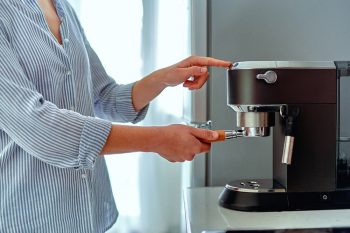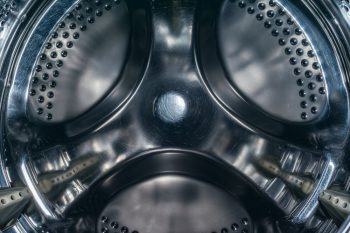
Washing machines are a staple in most households, serving as an essential tool in our daily cleaning routines. However, while these machines are cleaning our clothes, they can also harbor a variety of bacteria. In this comprehensive guide, we’ll discuss how to effectively clean bacteria from a washing machine, the common types of bacteria found in washing machines, potential health risks associated with bacteria in washing machines, effective cleaning methods, recommended cleaning solutions, and preventive measures to minimize bacterial growth.
To clean bacteria from a washing machine, run a hot wash cycle with 2 cups of white vinegar for front-loaders or 4 cups for top-loaders. Follow this with another hot wash cycle, this time using 2 cups (front-loaders) or 4 cups (top-loaders) of liquid chlorine bleach. Finally, run a third hot wash cycle with no added substances. Clean the rubber seal and other parts with a bleach-water solution. Always leave the washer door open when not in use and remove wet clothes immediately to prevent bacteria growth.
The Hidden World Inside Your Washing Machine
While washing machines are designed to keep our clothes clean, they can also become breeding grounds for certain types of bacteria. The most common types of bacteria found in washing machines include Escherichia coli (E. coli), Klebsiella, and bacteria from the genus Aldibiferax, Luteolibacter, TM7, Schlesneria, Polynucleobacter, Phenylobacterium, and Flectobacillus [^1^].
These bacteria can pose potential health risks, especially for people with compromised immune systems. Energy-efficient home washing machines may not eliminate bacteria as effectively as older, less-efficient counterparts because they wash clothes at lower temperatures, allowing more bacteria to survive the washing process.
Signs Your Washing Machine Might Be Harboring Bacteria
Several signs can indicate that a washing machine might be harboring bacteria:
- Unpleasant odor: A bad smell could signify that mold and bacteria are building up inside.
- Poor cleaning quality: If your clothes are not coming out as clean as they should, it could be a sign your washing machine is harboring bacteria.
- Black stains on the rubber seal: Black stains on the rubber seal around the door of your washing machine could be a sign of mold and bacteria buildup.
- Clothes have an unpleasant smell: If your clothes have an unpleasant odor after washing, it could be a sign that your washing machine is harboring bacteria.
- Presence of illness in the household: If someone in your household is sick, especially with a bacterial infection, it’s possible that their clothes could contaminate the washing machine with bacteria.
How to Clean Your Washing Machine and Eliminate Bacteria
Here are the steps to clean your washing machine effectively:
Front-Loading Washing Machines
- Make sure the drum is completely empty.
- Select the “Basket Clean” or “Tub Clean” setting. If your machine doesn’t have a specific cleaning setting, choose the hottest, largest, and longest load settings.
- Add 2 cups of white vinegar to the empty washer drum (or to the detergent reservoir if your machine doesn’t have a cleaning cycle). This will help eliminate odors and any mildew that has accumulated inside the machine. Allow the machine to run through an entire wash and rinse cycle.
- Set the washer a second time on the same cycles as before. Pour 2 cups of liquid chlorine bleach into the empty washer drum. This will kill germs and bacteria that have accumulated inside the machine. Allow the machine to run through another entire wash and rinse cycle.
- Run a third cycle on the same settings without adding anything to the empty washer drum. This will remove and rinse away any remaining residue.
- Fill a bucket with a solution of 1/4 cup liquid chlorine bleach and 1-quart water. Dip a clean rag into the solution, wring it out, and clean the rubber seal around the washer door, removing mildew and other deposits. Rinse the rag as needed in the bucket and follow with a clean, dry cloth to remove any remaining moisture from the seal area.
Remember never to mix bleach and vinegar, as they produce harmful toxic gas.
Top-Loading Washing Machines
- Make sure there are no clothes in the machine and set it to the hottest, largest, and longest cycle available.
- Add 4 cups (1 quart) of plain white vinegar to the tub (no detergent). Close the lid and allow the machine to agitate for one minute or so. Open the lid (or press “Pause”) so agitation stops and allow the machine to sit for one hour. After one hour, allow the machine to complete a full cycle, including rinse and spin.
- Leaving the same settings, fill the machine with the hottest water available and add 4 cups (1 quart) of liquid chlorine bleach. Close the lid and allow it to agitate for one minute, then open the lid to stop the agitation for one hour.
- After one hour, allow the machine to complete a full cycle, including rinse and spin, again.
- Run a third cycle on the same settings without adding anything to the detergent reservoir. This will rinse away any remaining residue.
- Finally, using a clean cloth dipped into a mixture of 1/4 cup liquid chlorine bleach and 1-quart water, clean the area under the rim.
Preventive Measures to Minimize Bacterial Growth in Washing Machines
To minimize bacterial growth in washing machines, you can follow these preventive measures:
- Leave the washer door or lid open when not in use to allow airflow and prevent mold growth.
- Remove wet clothes immediately after the wash cycle to avoid creating a damp environment for bacteria.
- Wipe down damp seals and other parts after each use, including the lid, drum, door, rubber gaskets, and detergent dispenser.
- Use high-quality detergents and consider adding antibacterial laundry sanitizers to your wash.
- Wash clothes at higher temperatures when dealing with potentially contaminated items.
- Regularly clean your washing machine by running a hot wash cycle with bleach or vinegar to kill mold and bacteria.
By following these tips, you can help reduce bacterial growth in your washing machine and maintain a cleaner, more hygienic laundry environment.
Conclusion
While washing machines are essential for maintaining clean clothes, they can also harbor harmful bacteria if not cleaned regularly. By following the tips and procedures outlined in this guide, you can ensure that your washing machine is clean, efficient, and bacteria-free.
Frequently Asked Questions
How often should I clean my washing machine to ensure it’s bacteria-free?
It’s recommended to clean your washing machine once a month to maintain its cleanliness and efficiency.
Does the type of detergent I use affect the bacteria in my washing machine?
Yes, the type of detergent you use can affect the bacterial growth in your washing machine. High-quality detergents and antibacterial laundry sanitizers can help reduce the bacteria in your washing machine.
Is it safe to wash baby clothes in a washing machine that might have bacteria?
While most bacteria in washing machines are unlikely to cause harm, it’s best to ensure your washing machine is clean before washing baby clothes. Babies have sensitive skin and are more susceptible to infections, so it’s best to sanitize your washing machine regularly.
Can I use other types of vinegar, like apple cider vinegar, to clean my washing machine?
While apple cider vinegar has similar cleaning properties, white vinegar is typically recommended for cleaning washing machines due to its higher acidity levels.
What should I do if the unpleasant odor persists even after cleaning the washing machine?
If the unpleasant odor persists, it could be due to a blockage in the drain pipe, a dirty filter, or residual water in the machine. If cleaning the washing machine hasn’t helped, you might need to call a professional to check the machine.











